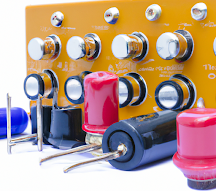How to Test Vacuum Tubes: Tips for Ensuring Proper Functioning of Your Old Equipment

How to identify common issues in vacuum tubes If you own old electronic equipment or have a collection of vacuum tubes, also known as electronic valves, you may want to test them to ensure they are functioning properly. Vacuum tubes were widely used in electronics before the advent of transistors and integrated circuits, and although their use today is limited to specialized applications such as guitar amplifiers and high-fidelity audio equipment, many people still possess vacuum tubes. There are several ways to test vacuum tubes, but it is important to handle them with care as they are delicate devices that require special attention. Testing Vacuum Tubes with a Tube Tester One of the most common ways to test vacuum tubes is using a tube tester. Tube testers come in various models, from simple to sophisticated ones. They allow you to check whether the tube is functioning correctly and determine its electrical characteristics such as gain, filament current, cathode emissio







.png)